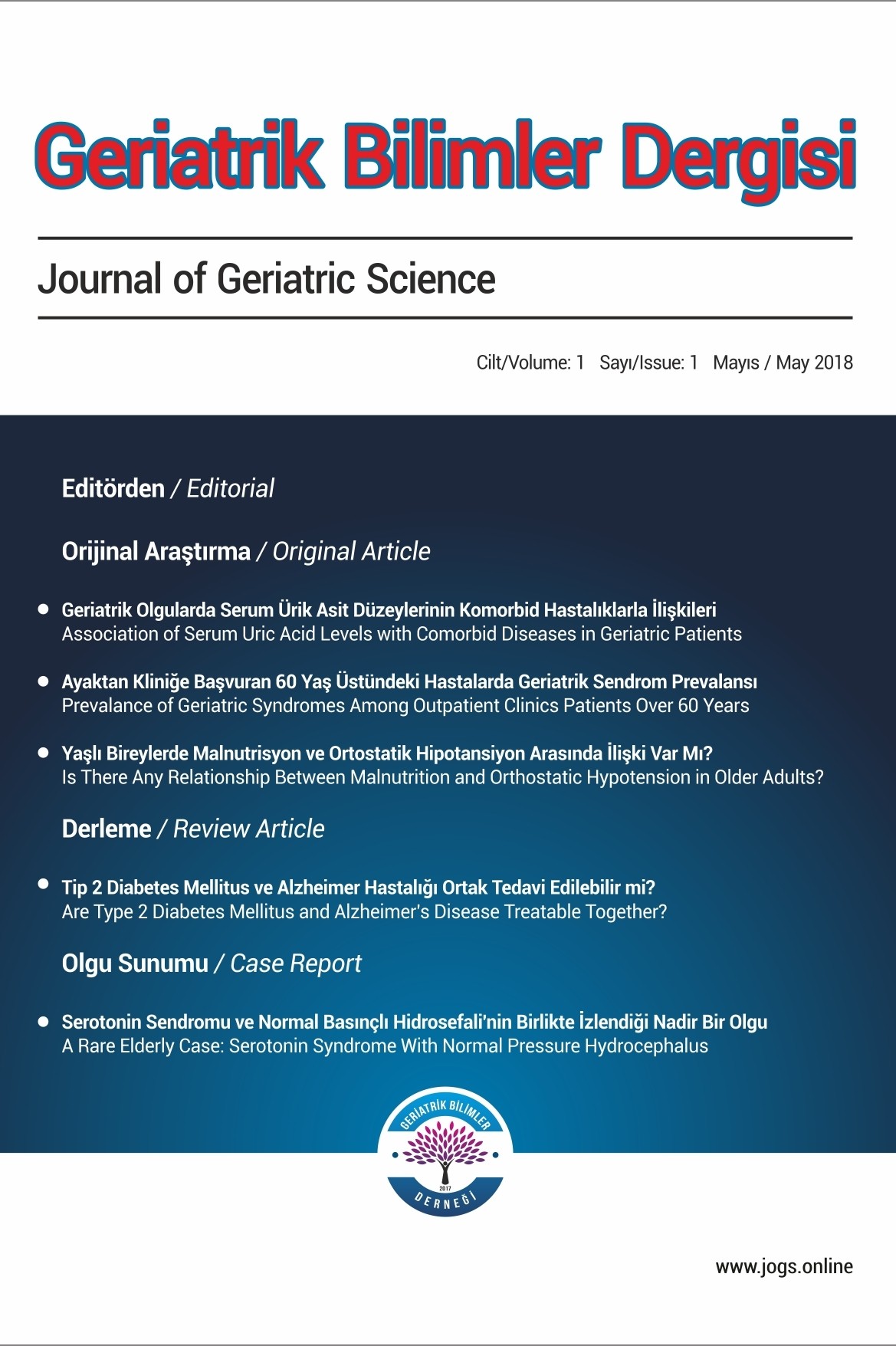
Geriatrik Bilimler Dergisi
Yazarlar: Esra ATEŞ BULUT, Suleyman Emre KOCYIGIT, Ali Ekrem AYDIN
Konular:Tıp
DOI:10.47141/geriatrik.919495
Anahtar Kelimeler:Uric acid,Sarcopenia,Muscle strength,Muscle mass,Older adults
Özet: Aim: Sarcopenia is a devastating geriatric syndrome that causes adverse health consequences in older patients. Inflammation and oxidative stress that increase with the aging process are suggested to play an important role in the pathophysiology of sarcopenia. In addition to inflammatory effects, uric acid (UA) has antioxidant properties, and the effect of UA on muscle strength and mass has not been clearly determined. In this study, it was aimed to investigate the effect of high serum UA levels on sarcopenia and its components. Material and Methods: The records of patients who were admitted to the geriatric outpatient clinic between January 2017 and January 2020 and underwent a comprehensive geriatric assessment, was reviewed. Demographic characteristics, systemic diseases, and laboratory values of the patients were obtained. The diagnosis of sarcopenia was made on the basis of the diagnostic criteria revised by the European Sarcopenia Working Group (EWGSOP) in 2019. Muscle mass was evaluated by bioimpedance, and handgrip strength was measured with a hand dynamometer. Hyperuricemia in the participants was accepted as serum uric acid level >7.0mg/dL in men and >5.7 mg/dL in women. Results: A total of 559 patients were included in the study, and the mean age of the participants was 72.55 ± 7.89 years. 60.2% of the participants were women, 20.03% had hyperuricemia. Diabetes mellitus and chronic obstructive pulmonary disease were more frequent in the hyperuricemia group. There was no significant difference between the groups in terms of sarcopenia and other geriatric syndromes. No relationship was found between low muscle mass, low grip strength, and low walking speed, which are the components of sarcopenia, and UA level (p> 0.05). Conclusion: The relation of UA, which has inflammatory and antioxidant effects, with sarcopenia is not clear. Control of obesity, chronic kidney disease, and cardiovascular diseases, which are risk factors for hyperuricemia, is also important in preventing sarcopenia. At this stage, it is recommended to monitor UA levels in older patients and provide optimal treatment of chronic diseases.